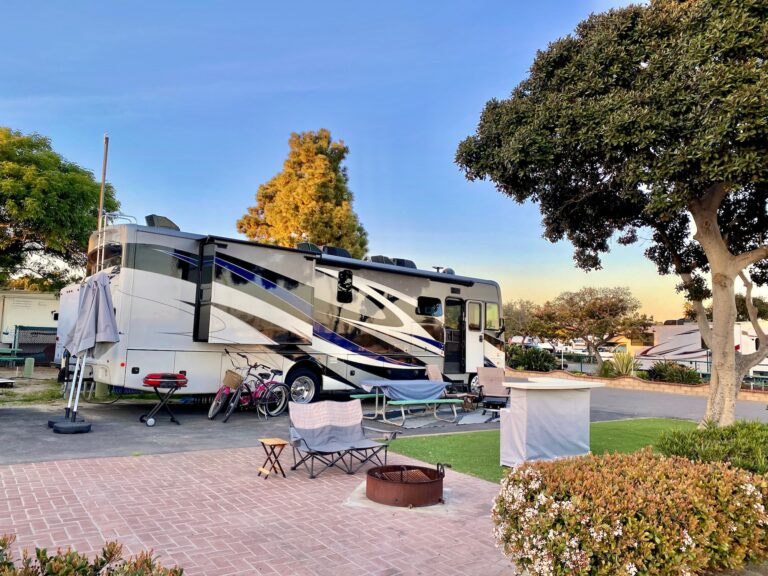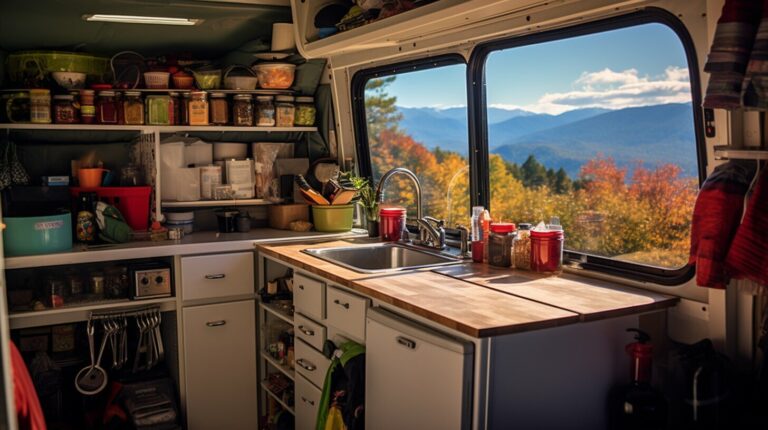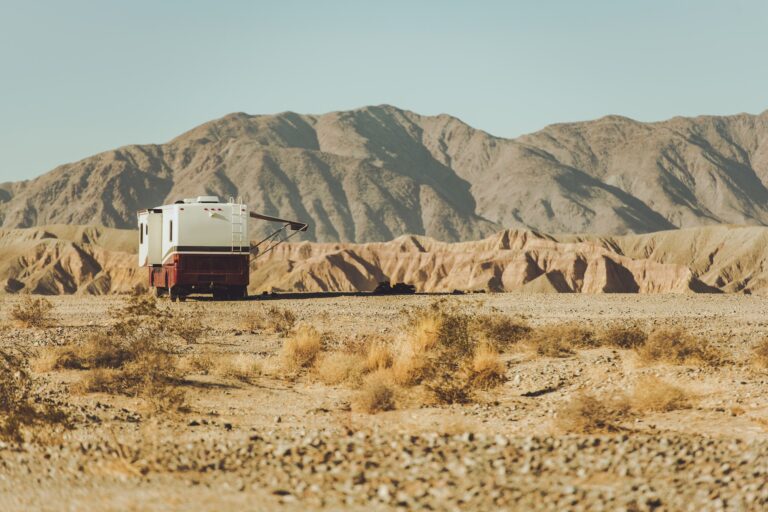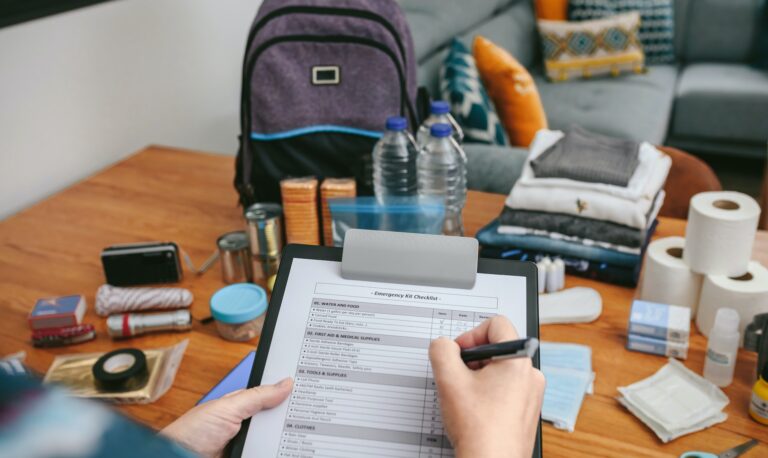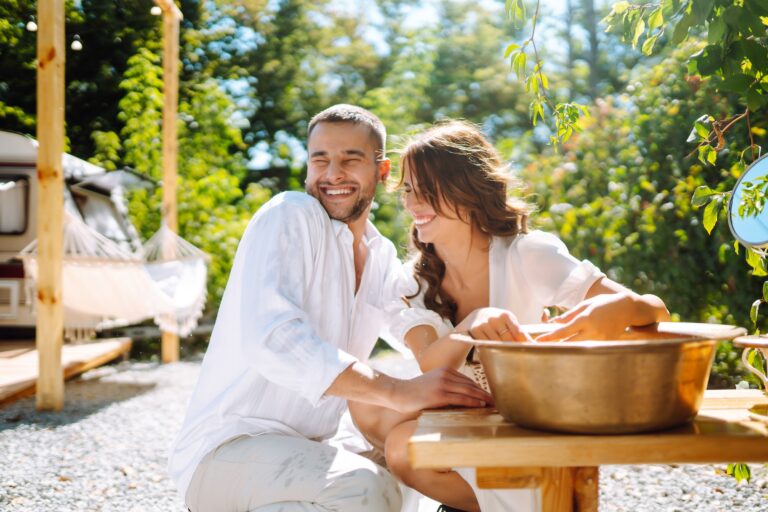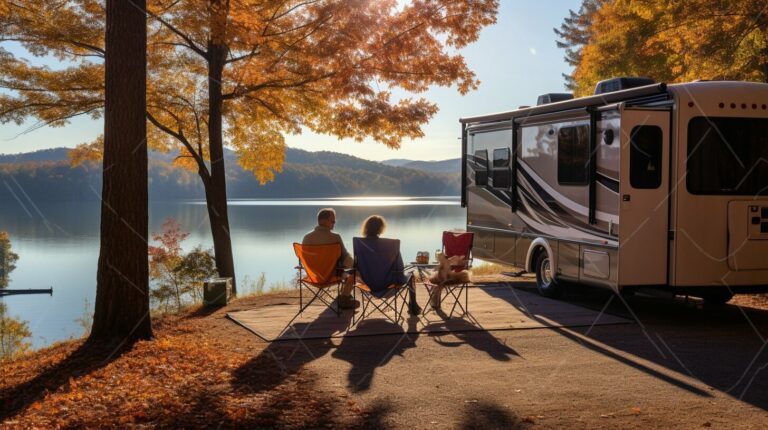Welcome campers! Are you planning your next outdoor adventure and wondering what gear you’ll need to stay comfortable and safe? Look no further! In this article, we’ll cover all the essential camping gear you’ll need for a successful trip.
From tents to sleeping bags, cookware to water filters, lighting to navigation tools, and personal care items to backpacks, we’ll offer our top recommendations for the best camping gear available. Whether you’re a seasoned pro or a first-time camper, we’ve got you covered.
So, grab a cup of coffee, sit back, and let’s dive into the wonderful world of camping gear. Your next adventure is just around the corner!
Quality Tents for a Comfortable Stay
When it comes to camping, a good quality tent is one of the most important pieces of gear you’ll need. Not only does it provide shelter from the elements, but it also serves as your home away from home during your adventure in the great outdoors.
There are many different types of tents available, each with their own unique features and advantages. Some are designed for backpacking, while others are better suited for car camping or family camping trips. Here are our top picks for the best camping tents:
| Tent | Features | Price |
|---|---|---|
| REI Co-op Half Dome 2 Plus | Spacious, easy to set up, good ventilation | $229 |
| Big Agnes Copper Spur HV UL2 | Ultralight, durable, great for backpacking | $449 |
| Coleman Sundome | Affordable, easy to set up, good for car camping | $69.99 |
When choosing a tent, consider factors such as size, weight, and ease of setup. You’ll also want to think about the weather conditions you’ll likely encounter during your camping trip, as some tents are better suited for certain climates than others.
Additional Tips:
- Always set up your tent on a flat, level surface.
- Use a ground cloth or tarp underneath your tent to protect it from damage.
- Make sure your tent is properly ventilated to prevent condensation buildup.
- Store your tent in a cool, dry place when not in use to prolong its lifespan.
“Investing in a high-quality tent is essential for a comfortable camping experience. Take the time to find a tent that meets your specific needs and you’ll be rewarded with many nights of restful sleep under the stars.”
Keeping Warm with the Right Sleeping Bag
When it comes to camping, a good quality sleeping bag is essential for staying warm and comfortable throughout the night. Here are some key factors to consider when choosing the right sleeping bag for your next adventure:
| Factor | Considerations |
|---|---|
| Temperature rating | Choose a bag rated for temperatures below what you expect to encounter. |
| Insulation type | Down is lightweight and compressible but loses warmth when wet, while synthetic is bulkier but retains warmth when wet. Choose the type that best suits your needs. |
| Bag shape | Mummy bags are snug and more efficient at trapping heat, while rectangular bags offer more room to move around. |
Some of our top picks for the best camping sleeping bags include:
- The North Face Eco Trail Bed 20, which is made from recycled materials and features a roomy rectangular cut perfect for side sleepers.
- The NEMO Disco 15, which has a unique spoon shape that allows for more movement without sacrificing warmth.
- The Marmot Trestles Elite Eco 20, which is made from eco-friendly materials and has a tight mummy shape for maximum warmth.
Remember, investing in a good quality sleeping bag can make all the difference in having a comfortable and enjoyable camping experience.
Cooking Up a Storm with the Right Cookware
Good food is a crucial component of any successful camping trip, and having the right cookware can make all the difference. When it comes to selecting the best camping cookware for your adventure, there are a few key factors to consider.
Portable Stoves
Portable stoves are an essential piece of camping gear for anyone looking to do some serious cooking in the great outdoors. There are many different types of camping stoves available, from small, single-burner models to larger, multi-burner stoves suitable for cooking more complex meals. When choosing a camping stove, consider factors such as the size and weight of the stove, the type of fuel it uses, and the length of your trip.
| Type of Stove | Pros | Cons |
|---|---|---|
| Canister Stove | Lightweight, easy to use | Fuel canisters can be bulky to carry |
| Liquid Fuel Stove | Burns hot, fuel is widely available | Heavy and bulky, more difficult to use |
| Wood Burning Stove | Uses renewable fuel, no need to carry extra fuel | Can be slow to heat up, requires constant tending |
Mess Kits
Mess kits are a great way to bring all the necessary cookware for your camping trip in one compact package. Most mess kits include a pot, pan, and utensils, and some even come with built-in plates and bowls. When selecting a mess kit, consider the size of your group and the type of meals you plan to prepare.
Other Cookware
In addition to portable stoves and mess kits, there are a few other pieces of camping cookware that are worth considering. These include coffee makers, grills, and Dutch ovens. Be sure to choose cookware that is durable, lightweight, and easy to clean.
“Cooking over an open flame is one of the great joys of camping. With the right cookware, you can create delicious meals that will fuel your adventures and keep you coming back for more!”
Stay Hydrated with a Quality Water Filter
Access to clean drinking water is crucial when camping, and a quality water filter can ensure you always have access to safe drinking water. Here are our top recommendations for the best camping water filters:
| Filter Type | Features | Price |
|---|---|---|
| Gravity Filter | Easy to use, no pumping required, can filter large amounts of water at once | $50-$100 |
| Pump Filter | Reliable and effective, can remove a wide range of contaminants, versatile | $50-$150 |
| Straw Filter | Portable and lightweight, easy to use, affordable | $10-$30 |
When selecting a water filter, consider factors such as filter capacity, filter speed, and filter lifespan. Additionally, be sure to choose a filter that can effectively remove contaminants commonly found in natural water sources.
An important thing to remember is to always inspect and clean your water filter before and after each use to ensure it is functioning properly. Keeping your filter in good condition will ensure that you have access to safe drinking water on all your camping adventures.
Lighting Up Your Campsite
When the sun sets, having a reliable source of light at your campsite is crucial. Not only does it allow you to see what you’re doing, but it can also improve safety and create a cozy atmosphere.
Lanterns
A lantern is a classic camping light source that can provide a bright and even glow throughout your campsite. Some lanterns are powered by batteries, while others can be charged with solar power or a hand crank. Look for models with adjustable brightness and runtime to suit your needs.
| Lanterns | Features | Price range |
|---|---|---|
| Etekcity Lantern | Adjustable brightness, collapsible design, battery-powered | $15-$30 |
| Black Diamond Apollo Lantern | Rechargeable, dimming function, collapsible design | $70-$100 |
| LuminAID PackLite | Solar-powered, inflatable design, waterproof | $20-$30 |
Flashlights and Headlamps
Flashlights and headlamps are essential for navigating around your campsite and taking nighttime trips to the bathroom. Headlamps can be especially useful, as they allow you to keep your hands free while still providing a focused beam of light.
| Flashlights/Headlamps | Features | Price range |
|---|---|---|
| Black Diamond Spot Headlamp | Waterproof, adjustable brightness, red night vision | $30-$50 |
| Streamlight ProTac HL 5-X Flashlight | 1000-lumen output, multiple brightness settings, durable design | $80-$100 |
| Coast HP7R Rechargeable Flashlight | Rechargeable, adjustable focus, long runtime | $50-$70 |
Whether you prefer the ambient glow of a lantern or the focused beam of a flashlight, having a reliable source of light is a must-have for any camping trip. Consider your needs and preferences when selecting the best lighting options for your next adventure.
Getting Around with the Right Navigation Tools
When you’re out in the wilderness, it’s important to have the right navigation tools to ensure you don’t get lost. Here are some of the best camping navigation tools:
| Navigation Tool | Description |
|---|---|
| Maps | Printed maps are essential for navigating in areas without cell service. Make sure to get a map of the specific area you’ll be exploring. |
| Compasses | A compass helps you navigate by pointing you in the direction of north. Make sure to get a high-quality compass and learn how to use it properly. |
| GPS Devices and Apps | GPS devices and apps can be useful for navigating, especially in areas with spotty cell service. Make sure to bring extra batteries or a portable charger. |
When selecting a navigation tool, consider the type of terrain you’ll be navigating, the length of your trip, and your level of experience. Always carry a backup navigation tool in case your primary one fails.
Staying Clean and Comfortable
Camping is a great way to connect with nature, but it’s important to stay clean and comfortable while enjoying the outdoors. Here are our top picks for camping hygiene products and personal care items:
Portable Showers
A portable shower can be a game-changer for staying clean while camping. Look for one with a durable water container, a strong pump, and an adjustable nozzle for the perfect water pressure. Our top pick is the Camp Chef HWD5 Triton Water Heater.
Portable Toilets
When nature calls, a portable toilet can be a lifesaver. Look for one with a comfortable seat, a sturdy frame, and a reliable waste disposal system. Our top pick is the Thetford Porta Potti 365.
Insect Repellent
No one likes getting bitten by bugs while camping. Invest in a good quality insect repellent to keep mosquitos, ticks, and other pests at bay. Our top pick is Repel 100 Insect Repellent.
Sunscreen
Protect your skin from the sun’s harmful rays with a quality sunscreen. Look for one with a high SPF and water-resistant formula. Our top pick is Neutrogena Ultra Sheer Dry-Touch Sunscreen.
Camp Towels
Camp towels are lightweight and compact, making them perfect for camping trips. Look for one made from microfiber for quick-drying and absorbency. Our top pick is Sea to Summit DryLite Towel.
Packing Efficiently for Your Adventure
Properly packing your camping gear is essential for a successful trip. Whether you’re embarking on a weekend backpacking trip or a longer car camping adventure, following these tips will help you pack efficiently:
- Make a packing list: Create a checklist of all the gear you’ll need for your trip so you don’t forget anything.
- Organize your gear: Sort your gear into categories – such as food, clothing, and shelter – and pack each category in its own separate bag. This will make it easier to find what you need when you need it.
- Pack strategically: Start by packing your heaviest gear at the bottom of your backpack or car trunk and work your way up, packing lighter items on top. This will distribute the weight evenly and make it easier to carry or load.
- Minimize bulk: Choose gear that packs down small and try to eliminate any unnecessary items. The less bulk in your pack or car, the easier it will be to move around and find what you need.
- Consider the weather: Pack clothing and gear appropriate for the weather conditions you’ll be facing. Be prepared for unexpected changes in temperature or precipitation.
Backpacks and Gear Storage Options
Choosing the right backpack or gear storage option is important for both comfort and convenience. Here are a few things to keep in mind:
- Backpack size: Choose a backpack that’s appropriate for the length of your trip and the amount of gear you’ll be carrying. A smaller backpack is more suitable for a weekend trip while a larger one is better for longer trips.
- Fit and comfort: Try on several backpacks to find one that fits comfortably and distributes weight evenly on your back and shoulders.
- Storage options: Look for backpacks with multiple compartments or external pockets to help you stay organized. For car camping, consider using storage containers or plastic bins to keep gear organized and easily accessible.
Leave No Trace
Remember to follow the principles of Leave No Trace when packing for your camping trip. Leave No Trace is a set of guidelines that promote responsible outdoor ethics and encourages campers to leave the natural environment as they found it. This includes packing out all trash and leaving the campsite in its natural state.
Section 10: Maintaining and Caring for Your Camping Gear
Camping gear can be a significant investment, but with proper maintenance and care, it can last for many camping trips to come. Here are some tips to help you take care of your essential camping gear:
1. Cleaning and Drying Your Gear
After each camping trip, make sure to clean and dry your gear thoroughly before storing it. Use a gentle, non-abrasive cleaner on your tent and sleeping bag, and wipe down any cookware and utensils. Let everything dry completely before putting it away.
2. Storing Your Gear
When storing your camping gear, make sure to keep it in a cool, dry place. Avoid storing it in direct sunlight or damp areas, which can cause damage or mildew. Use a gear loft or storage container to keep everything organized and easily accessible for your next camping trip.
3. Inspecting Your Gear
Before each camping trip, inspect your gear thoroughly for any signs of damage or wear and tear. Check for tears or leaks in your tent and sleeping bag, and make sure your cookware and utensils are in good condition. Replace any damaged or worn gear before heading out on your next adventure.
4. Maintenance and Repairs
Regular maintenance and repairs can help extend the life of your camping gear. Follow the manufacturer’s instructions for maintenance and repair, and don’t hesitate to contact them for advice or assistance. Keep a repair kit handy for quick fixes while on the go.
5. Environmental Considerations
When camping, be sure to follow Leave No Trace principles and practice responsible camping habits. Avoid using harsh detergents or soaps that can harm natural water sources, and don’t leave any trash or gear behind. By taking care of your camping gear and the environment, you can ensure many happy camping trips to come.
Section 11: Frequently Asked Questions
Camping gear can be a complicated subject, and many people have questions about how to choose the right equipment for their needs. Here are some of the most common questions we’ve received from our readers:
What size tent do I need?
The size of the tent you need will depend on how many people will be using it and how much gear you need to store inside. As a general rule, you should assume that each person will need at least 20 square feet of floor space. So if you’re camping with two people, you’ll want a tent that offers at least 40 square feet of space. If you plan on storing gear inside, make sure to factor that into your calculations as well.
What temperature rating do I need for my sleeping bag?
The temperature rating you need will depend on the climate you plan to camp in. As a general rule, you’ll want a sleeping bag that is rated 10-20 degrees Fahrenheit lower than the lowest temperature you expect to encounter. So if you’re camping in the summer, a bag rated for 40 degrees should be sufficient, whereas if you’re camping in the winter, you’ll need a bag rated for 0 degrees or lower.
How do I clean and store my camping gear?
Cleaning and storing your camping gear properly is essential if you want it to last for many years of adventures. Most camping gear can be cleaned with soap and water, but make sure to read the instructions for your specific gear, as some items may require special care. When storing your gear, make sure it is completely dry and stored in a cool, dry place to prevent mold and mildew from forming.
What type of navigation tools do I need?
The type of navigation tools you need will depend on the type of camping you plan to do. If you’re camping in a national park with well-defined trails, a map and compass may be sufficient. If you plan on doing any backcountry camping, a GPS device or app may be more useful. Make sure to research the area you plan to camp in and choose your navigation tools accordingly.
We hope these answers help you choose the right camping gear for your next adventure. If you have any more questions, feel free to reach out to us.

